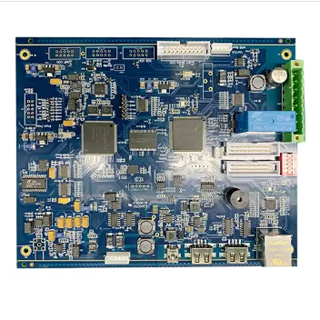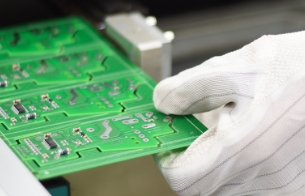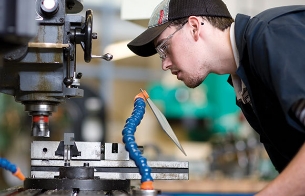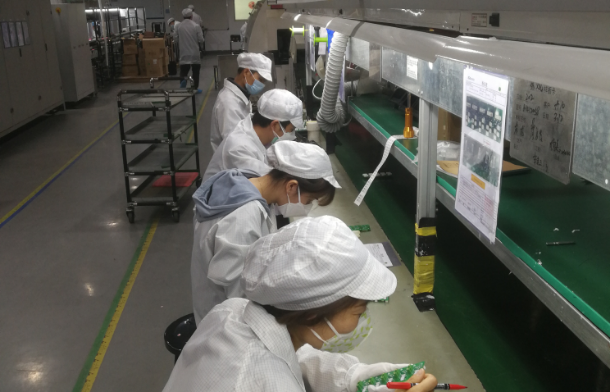Consumer Electronics BGA assembly
- Supplier Type: PCB Assembly
- Service: 24Hours Technical Services
- Package: SMD/DIP
- Type: PCBA
- Brand Name: Original
- Color: Green,Blue,Black, White, Red and more
- MOQ: 1
- No MOQ or MPQ limited.
- Daily quotes and negotiations.
- Prototypes quotation within 3h.
- Flexible payment options.
- Prototype or mass production order acceptable.
- Project Info
- Specification
What is Consumer Electronics BGA Assembly?
Electronics for the general public The process of attaching a BGA (Ball Grid Array) chip to the substrate of a circuit board is known as BGA assembly. BGA chips are surface mount components that have a package design that allows them to be soldered directly to the board with little effort.
This process has several advantages over other surface mount technology (SMT) methods, including being highly reliable and cost-effective. It also gives manufacturers more freedom when it comes to designing their products.
BGA assembly is used in consumer electronics for a variety of components such as memory chips, processors, and other integrated circuits. As a result, manufacturers can produce smaller, faster, and more reliable products.
Benefits of Consumer Electronics BGA Assembly
BGA assembly offers several benefits to manufacturers when it comes to consumer electronics. Here are some of the advantages it provides:
- Increased Reliability: When compared to traditional SMT assembly, BGA assembly provides a high level of reliability. Because there are fewer points of contact between the chip and the substrate, this is the case. This reduces the possibility of shorts and other defects.
- Faster Production Times: Because the process is relatively quick and simple, BGA assembly allows for faster production times. This means that manufacturers can produce more products in less time.
- Cost-Effective: Because it reduces the amount of time and labor required to assemble a product, BGA assembly is also a cost-effective method of manufacturing products. In the long run, this can help manufacturers save money.
- Flexibility: BGA assembly allows manufacturers to be more creative with their designs.
Challenges of Consumer Electronics BGA Assembly
Although BGA assembly offers several advantages to manufacturers, some challenges come with it. Here are some of the potential issues that come with BGA assembly:
- Complexity: The BGA assembly process is relatively complex, which can result in errors if not carried out correctly. This is because the chips must be precisely placed on the board to ensure reliable connections.
- Heat Issues: High temperatures are also required for BGA assembly to solder the chips to the board. If not done correctly, this can cause heat-related issues and potentially damage the chips.
- Poor Workmanship: Poor craftsmanship can also cause problems with BGA assembly. This is due to the high level of skill and precision required to ensure that the chips are correctly placed and soldered.
Advantages of Consumer Electronics BGA Assembly
Despite the challenges that come with BGA assembly, it still offers several advantages to manufacturers. Here are some of the benefits that come with this process:
- Improved Performance: BGA assembly can improve the performance of products since it allows for faster and more efficient connections between components. This can result in faster response times and better overall performance.
- Reduced Space: BGA assembly also helps to reduce the amount of space needed for components. This is because BGA chips can be placed closer together than traditional SMT components. This allows manufacturers to create smaller products that are more efficient.
- Improved Durability: BGA assembly also helps to improve the durability of products since it provides a more reliable connection between components. This can help to reduce the occurrence of defects and can lead to longer product lifespans.
Types of Consumer Electronics BGA Assembly
There are a few different types of BGA assembly that are used in consumer electronics. Here are some of the most common types of BGA assembly:
- BGA Flip Chip: Flip chip BGA is a type of BGA assembly in which the chip is flipped over and soldered directly to the board. This type of BGA assembly is commonly used for memory chips and processors.
- Pin Grid Array (PGA): A PGA assembly is another type of BGA assembly that employs a chip with pins soldered directly to the board. This type of BGA assembly is commonly used for audio and video processors.
- Ball Grid Array (BGA): The most common type of BGA assembly, used for a wide range of components. This BGA assembly employs a chip that is soldered directly to the board.
Processes Involved in Consumer Electronics BGA Assembly
The BGA assembly process involves a few different steps to ensure that the chips are placed and soldered correctly. Here are the steps involved in BGA assembly:
- Chip Positioning: The first step is to position the chips on the board. This is accomplished by using a specialized machine that is designed to place the chips in the proper location.
- Soldering: The chips must now be soldered to the board. This is accomplished with the help of a specialized machine that uses high temperatures to melt the solder and form a secure connection between the chips and the board.
- After the chips have been soldered, they must be inspected to ensure that they have been properly placed and soldered. A microscope and other specialized tools are used for this.
Tips for Optimizing Consumer Electronics BGA Assembly
Optimizing BGA assembly can help to reduce the occurrence of defects and can lead to improved performance. Here are some tips for optimizing BGA assembly:
- Use Quality Components: It is critical to use quality components when optimizing BGA assembly. This is because low-quality components can result in errors and defects.
- Follow Manufacturers’ Guidelines: For BGA assembly, it is critical to follow the manufacturer’s guidelines. This is because these guidelines can help to ensure that the assembly process is completed correctly and can help to reduce the occurrence of errors.
- Using automated equipment can help to improve the accuracy and speed of the BGA assembly process. This can help to reduce the occurrence of defects and improve the product’s performance.
- Use Specialized Tools: Using specialized tools can improve the accuracy and speed of the BGA assembly process. This includes microscopes, X-ray machines, and other equipment.
Troubleshooting Tips for Consumer Electronics BGA Assembly
If you’re experiencing issues with BGA assembly, there are a few troubleshooting tips that can help. Here are some tips for troubleshooting BGA assembly:
- Check for Shorts: Shorts are one of the most common problems with BGA assembly. This is caused by misaligned chips or solder bridges. Use a continuity tester or an X-ray machine to look for shorts.
- Poor Solder Joints: Poorly soldered joints can also cause problems with BGA assembly. Examine solder joints for any signs of defects with a microscope to check for this.
- Check for Misaligned Chips: Misaligned chips can also cause BGA assembly problems. To check for this, examine the chips under a microscope for signs of misalignment.
- Examine the Board: The board can also cause problems with the BGA assembly. To check for this, inspect the board with an X-ray machine for any signs of defects.
Courses and Services for Consumer Electronics BGA Assembly
If you’re looking to learn more about BGA assembly, there are a few courses and services available. Here are some of the courses and services available for BGA assembly:
- Training Courses: A variety of BGA assembly training courses are available. These courses can help you improve your understanding of the process and become more proficient in it.
- Consulting Services: A variety of consulting services are available for BGA assembly. These services can assist in providing advice and guidance on how to optimize the process and reduce the occurrence of errors.
- Repair Services: A variety of repair services are available for BGA assembly. These services can assist in identifying and correcting any process issues, as well as ensuring that your product is functioning properly.
Conclusion
Finally, BGA assembly is a critical process for consumer electronics manufacturers. It has several advantages, including increased reliability, shorter production times, and cost-effectiveness. It also has some drawbacks, including complexity, heat issues, and poor craftsmanship.
There are, however, some tips and courses available to assist in optimizing BGA assembly. This can help to reduce the occurrence of errors and ensure that your products are dependable and perform well. Consider BGA assembly if you want to get the most out of your consumer electronics product!
PCB Products show
Our 2 Layer PCB Board Features
Why choose us for PCB assembly services
Economy
We can provide various types of PCB boards and various materials at competitive prices according to customer requirements.
Best Team
No Matter What Kind Of Pcb Board You Want, Our Trained Designers Can Make lt lnAbout 10-12 Working Days. Emplovees Know The lmportance Of Deadlines, AndTheir Goal ls To Give You Top-Notch Results Within A Specified Time Frame.
Best Team
No Matter What Kind Of Pcb Board You Want, Our Trained Designers Can Make lt lnAbout 10-12 Working Days. Emplovees Know The lmportance Of Deadlines, AndTheir Goal ls To Give You Top-Notch Results Within A Specified Time Frame.
Service
Brnon co0p PchaSn To Functes Candackage Finish , We Provid












